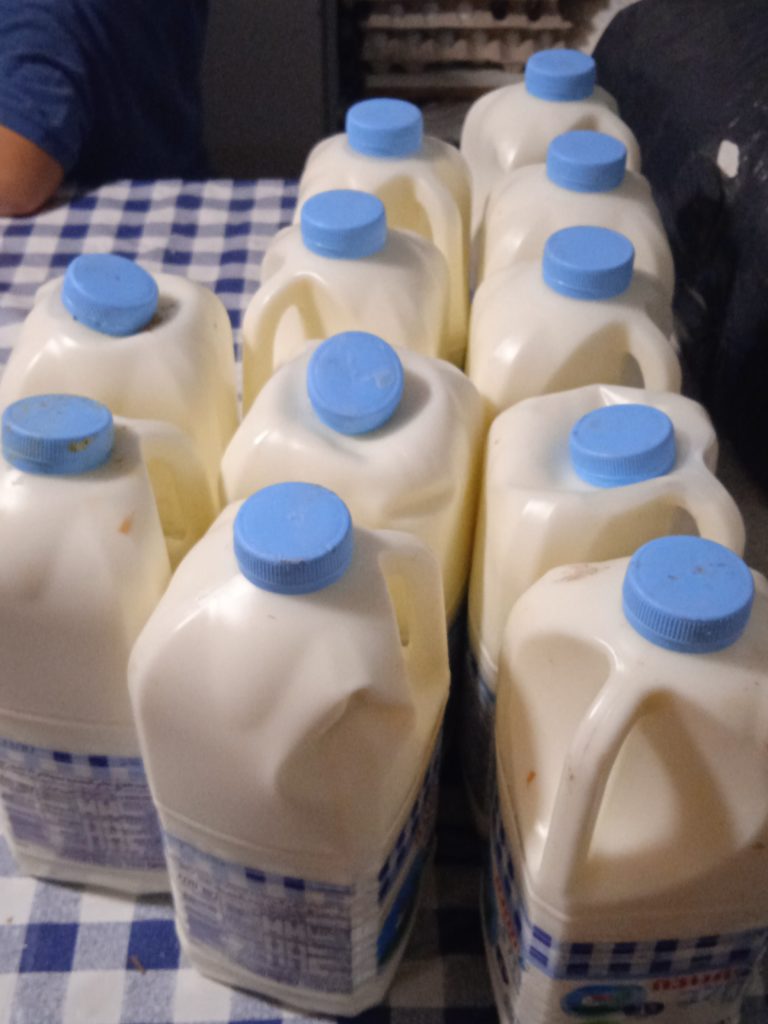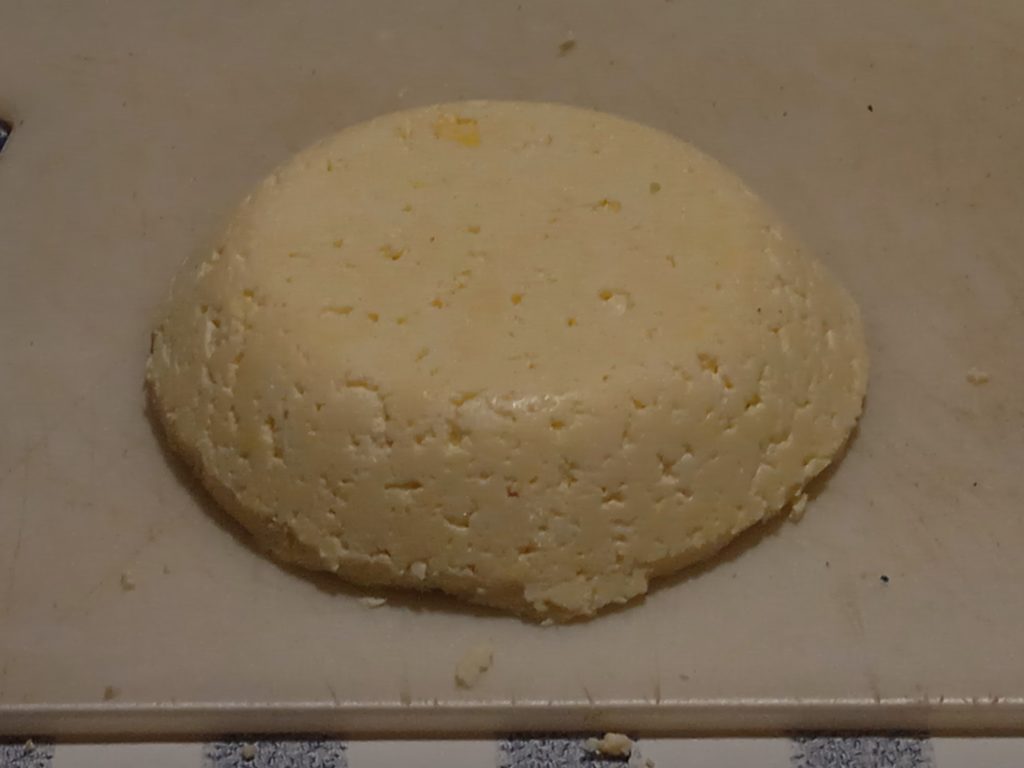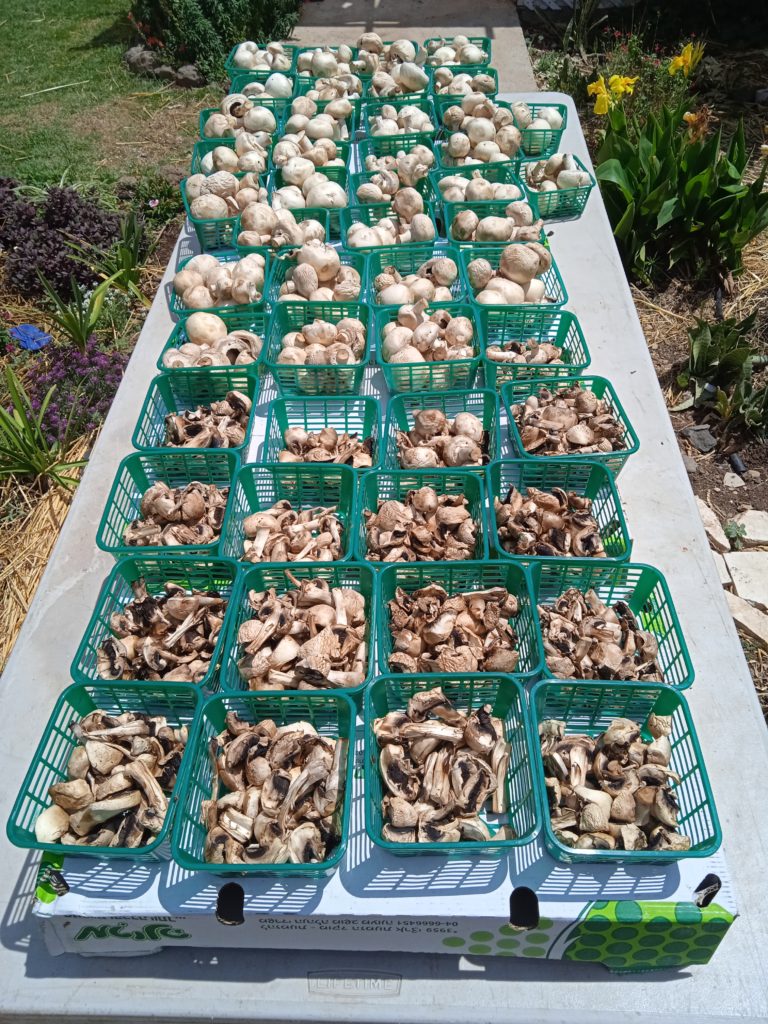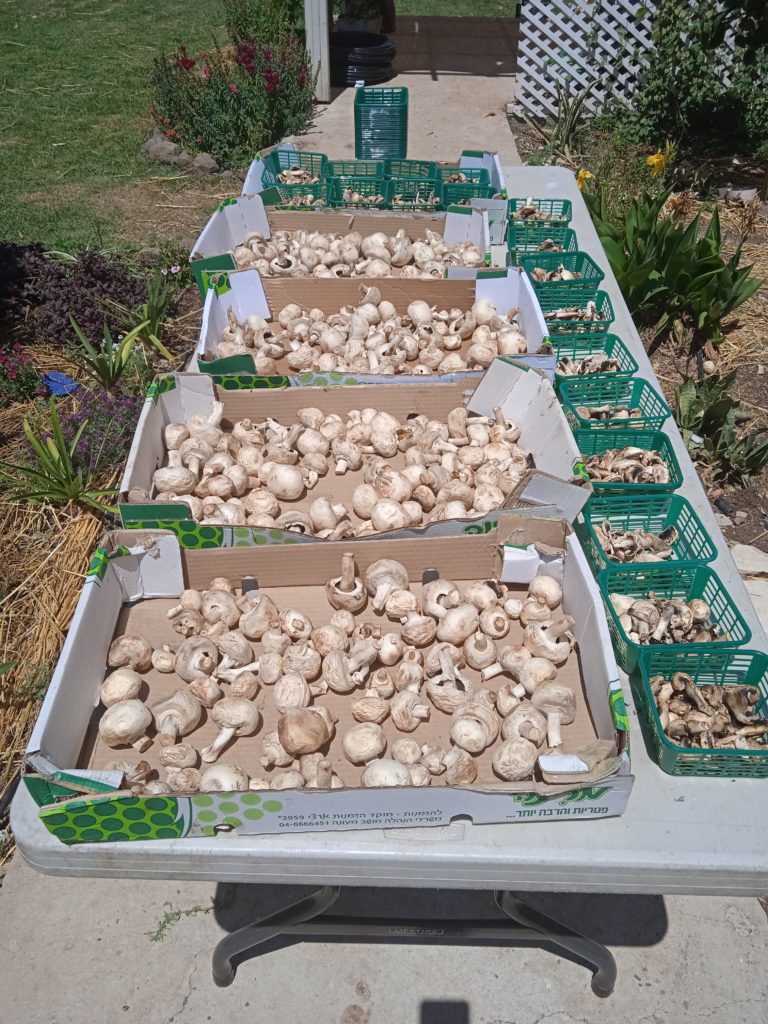My son recently visited the US and brought back for me my latest kitchen tool, a steam juicer. I had put a lot of grapes in the freezer knowing he would be bringing it to me when he came for this past Shabbos, and yesterday I had a full day of experimenting with my new plaything.
A steam juicer is basically a large pot that has three sections that nest inside one another: the bottom holds the boiling water, the middle collects the juice, and the top is a colander that the fruit or vegetables are put into. There is a plastic tube that leads from the center juice receptacle to whatever container you want to put the juice in.
The basic idea is that rather than blend/mash/cook/strain the grapes to make juice, you can steam them and skip all those steps. It took longer than I expected for the juice to be extracted and I was a bit impatient waiting for it to be done, wondering if this had been a worthwhile purchase or not. After a few hours I realized that I had slowed down the process significantly by not keeping the juicer at a high heat the entire time. (I was afraid that the water in the bottom section would boil dry, and thought that keeping it at a simmer would be effective and minimize the likelihood of burning the pot). Once I realized my mistake, it went much more quickly. But it’s not a fast process.
The last time I made grape juice I added water while the grapes were cooking. Since I wasn’t sure of the exact dilution, there was a question about if the bracha was still hagafen or not, so we didn’t want to use it for kiddush on Shabbos. This time I made sure it was 100% grape juice.
Once I had eight liters of juice, I began canning the juice in jars so they would be shelf stable, while simultaneously adding a fresh batch of grapes to the juicer. In the end I processed 16 quarts of juice.
My conclusion on the steam juicer is that I’m glad that I bought it since the actual hands on time to make the juice is cut down quite a bit, so I was able to do other things while the steamer basically made the juice for me. The end product is nice and clear, and the flavor is excellent. Now that I have a steam juicer, I’ll be looking for other opportunities to put it to use and justify the space it takes up in the cabinet!
I bought my dehydrator back in 2009, and it served me well until last year it suddenly stopped working.
I wasn’t sure what was wrong with it, but since it’s basically a simple contraption, figured it could only be one of two possibilities. When I originally bought the dehydrator, I got a reconditioned one for $150. To buy the same thing new at this time would be $319, so the investment in a couple of parts seemed like a worthwhile choice. I bought a thermal fuse and a motor from the online store for about $50, but they don’t ship to Israel so I waited for many months until my husband made a trip to the US and was able to bring them back.
My husband brought back the replacement parts in February but putting them in was low on the priority list of projects. When he was ready to replace the parts, the transformer had blown. Since I bought and used my dehydrator when living in the US, it runs on 110 electricity and needs a transformer to be used here. I had to get the part for that to be fixed before working on the dehydrator.
I was taken aback and discouraged that I couldn’t find any local hardware stores that had the size fuse I needed. I made two separate trips to RBS over a period of several weeks and each time looked for the fuse; thankfully I finally found it the second time, when I took the boys to yeshiva for their first day. I did not like that several of my appliances are dependent on a five shekel fuse that I couldn’t find, and they couldn’t be used for weeks while I was searching for the fuses. I don’t want to be in that situation again if I can help it, so when I found them, I bought four extras to have on hand.
After all this time and effort, I finally have a working dehydrator again! I wanted to clear the freezer since I’m getting my chicken and meat order for the holidays soon, and need to make space. In addition to taking out the grapes, I took out all the frozen peas and frozen mixed vegetables, four bags of each, and put them all in the trays to dehydrate.
Once they were finished drying and had cooled off completely, I put them in containers on the shelf, and am ready for my meat pickup later today! I like canning so much and it has its advantages, but it can’t compare with how compact and lightweight food is after being dehydrated.
Avivah






